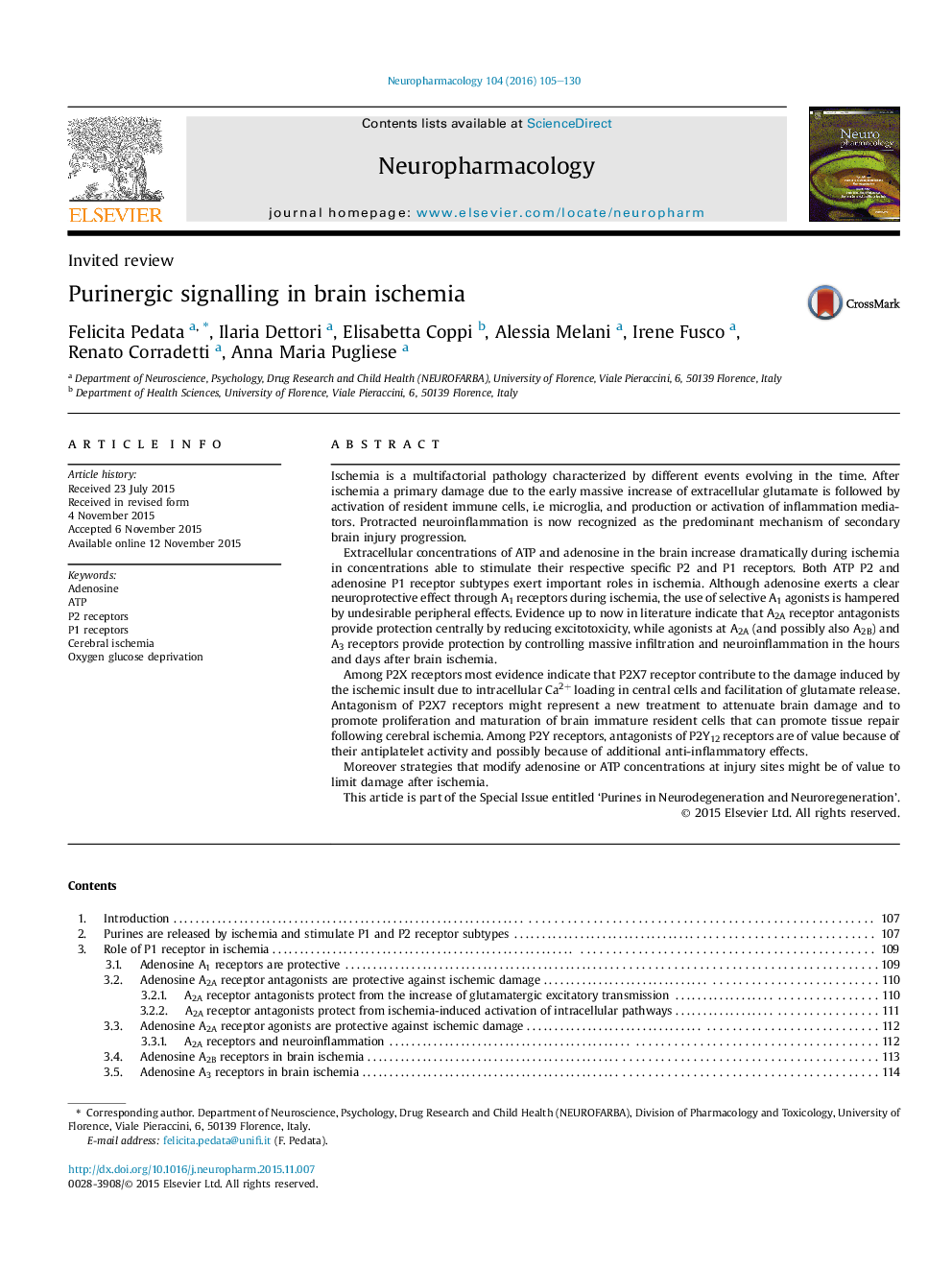| کد مقاله | کد نشریه | سال انتشار | مقاله انگلیسی | نسخه تمام متن |
|---|---|---|---|---|
| 5813586 | 1556611 | 2016 | 26 صفحه PDF | دانلود رایگان |
- Roles of purinergic P1 and P2 receptor in brain hypoxia/ischemia.
- After ischemia major pathogenic mechanisms are excitotoxicity followed by inflammation.
- Time window of purine A1, A2A, A3 and P2X7 receptor mediated effects after stroke.
- Therapeutic strategies secondary to the time-related phenomena typical of ischemia.
- Agents that modify local concentration of ATP and adenosine at areas of injury.
Ischemia is a multifactorial pathology characterized by different events evolving in the time. After ischemia a primary damage due to the early massive increase of extracellular glutamate is followed by activation of resident immune cells, i.e microglia, and production or activation of inflammation mediators. Protracted neuroinflammation is now recognized as the predominant mechanism of secondary brain injury progression.Extracellular concentrations of ATP and adenosine in the brain increase dramatically during ischemia in concentrations able to stimulate their respective specific P2 and P1 receptors. Both ATP P2 and adenosine P1 receptor subtypes exert important roles in ischemia. Although adenosine exerts a clear neuroprotective effect through A1 receptors during ischemia, the use of selective A1 agonists is hampered by undesirable peripheral effects. Evidence up to now in literature indicate that A2A receptor antagonists provide protection centrally by reducing excitotoxicity, while agonists at A2A (and possibly also A2B) and A3 receptors provide protection by controlling massive infiltration and neuroinflammation in the hours and days after brain ischemia.Among P2X receptors most evidence indicate that P2X7 receptor contribute to the damage induced by the ischemic insult due to intracellular Ca2+ loading in central cells and facilitation of glutamate release. Antagonism of P2X7 receptors might represent a new treatment to attenuate brain damage and to promote proliferation and maturation of brain immature resident cells that can promote tissue repair following cerebral ischemia. Among P2Y receptors, antagonists of P2Y12 receptors are of value because of their antiplatelet activity and possibly because of additional anti-inflammatory effects.Moreover strategies that modify adenosine or ATP concentrations at injury sites might be of value to limit damage after ischemia.This article is part of the Special Issue entitled 'Purines in Neurodegeneration and Neuroregeneration'.
Journal: Neuropharmacology - Volume 104, May 2016, Pages 105-130
